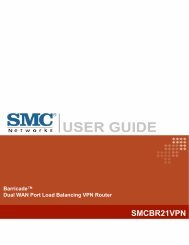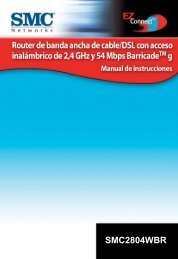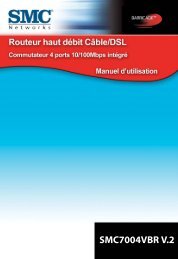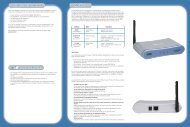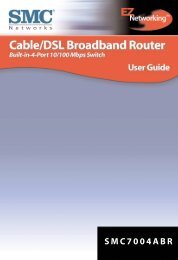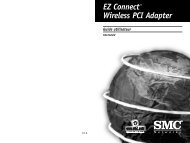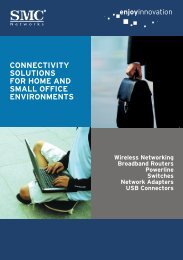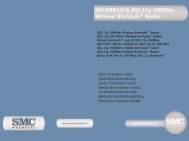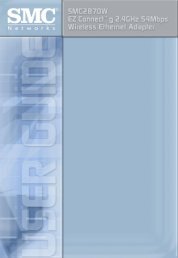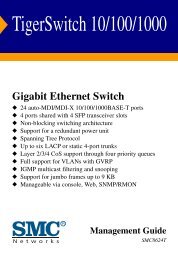TigerSwitch 10/100/1000 Installation Guide - SMC
TigerSwitch 10/100/1000 Installation Guide - SMC
TigerSwitch 10/100/1000 Installation Guide - SMC
Create successful ePaper yourself
Turn your PDF publications into a flip-book with our unique Google optimized e-Paper software.
Connecting Network Devices<br />
CHAPTER 4<br />
MAKING NETWORK<br />
CONNECTIONS<br />
The <strong>TigerSwitch</strong> <strong>10</strong>/<strong>10</strong>0/<strong>10</strong>00 is designed to interconnect multiple<br />
segments (or collision domains). It can be connected to network cards in<br />
PCs and servers, as well as to hubs, switches or routers. It may also be<br />
connected to devices using optional SFP transceivers.<br />
Twisted-Pair Devices<br />
Each device requires an unshielded twisted-pair (UTP) cable with RJ-45<br />
connectors at both ends. Use Category 5, 5e or 6 cable for <strong>10</strong>00BASE-T<br />
connections, Category 5 for <strong>10</strong>0BASE-TX connections, and Category 3, 4<br />
or 5 for <strong>10</strong>BASE-T connections.<br />
Cabling <strong>Guide</strong>lines<br />
The RJ-45 ports on the switch support automatic MDI/MDI-X pinout<br />
configuration, so you can use standard straight-through twisted-pair cables<br />
to connect to any other network device (PCs, servers, switches, routers, or<br />
hubs).<br />
See Appendix B for further information on cabling.<br />
Caution: Do not plug a phone jack connector into an RJ-45 port.<br />
This will damage the switch. Use only twisted-pair cables with<br />
RJ-45 connectors that conform to FCC standards.<br />
4-1



